#el badi palace
Text
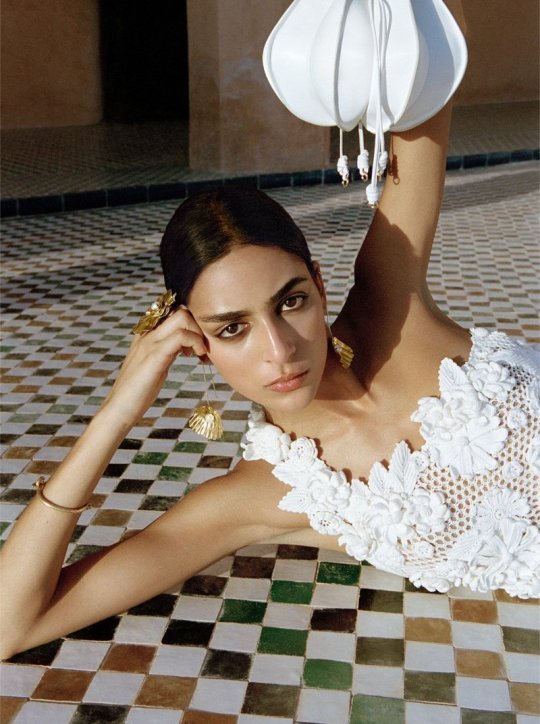
Nora Attal at Morocco’s El Badi Palace for Ulla Johnson SS22
7 notes
·
View notes
Text

El Badi Palace. 👑 This popular Marrakech spot opened in 1593
El Badi Palace or Badi' Palace is a ruined palace located in Marrakesh, Morocco. It was commissioned by the sultan Ahmad al-Mansur of the Saadian dynasty
The palace, decorated with materials imported from numerous countries ranging from Italy to Mali, was used for receptions and designed to showcase the Sultan's wealth and powe. It was one part of a larger Saadian palace complex occupying the Kasbah district of Marrakesh.
The palace was neglected after al-Mansur's death in 1603 and eventually fell into ruin with the decline of the Saadian dynasty.
Photo credit :
instagram
2 notes
·
View notes
Text
Bucket List Travel: The Top 50 Places In The World

According to a new survey, Bali is the top bucket list destination in the world.Getty
The website surveyed its 1.5 million-strong social audience in order to determine the best bucket list places around the world. According to Sarah Clayton-Lea, head of content with Big 7 Travel, this is the first time the site has assembled this list. "Bucket list travel was a trend that popped up again and again in previous surveys when asking our readers what sort of travel content they most enjoyed consuming," says Clayton-Lea. "So, our curiosity got the better of us and we wanted to know which destinations people are dreaming of for 2019/2020."
READ MORE: "Why You Should Skip Iceland And Go To These 9 Under-the-Radar Places"
The results of the world’s top 50 bucket list destinations include some of the most beautiful places on earth. "White sandy beaches are still a must-visit for many, with vibrant cities also making an appearance on a lot of people’s bucket lists," says Clayton-Lea. Countries with naturally beautiful scenery and world-famous landmarks came out on top: 22% of the destinations on the list have white sandy beaches, while 52% are iconic cities.
The famously colorful Bo Kaap neighborhood in Cape Town, South Africa.Getty
In the study, Big 7 Travel found that people were also more likely to add a destination to their list if they had seen it on social media, and 33% of people research vacation destinations on their Instagram feed. "With over one-third of our readers saying they look to Instagram for travel inspiration, it makes sense that cities with colorful neighborhoods (such as Cape Town’s Bo Kaap) made the cut," says Clayton-Lea.
Bali topped the list of the 50 most popular bucket list destination on earth, but there were also some unexpected picks. "The top 10 list has a lot of the expected dream destinations, but there are a few surprises on the list: Paro Valley in Bhutan, for example, or Virunga National Park in the Congo," says Clayton-Lea. "I think this shows a great appetite for a need to get off the grid and can only assume that social media (and Netflix, in the case of Virunga!) is responsible for spreading the word of these amazing places."
An interesting factoid uncovered in the study: Most people have an average bucket list of just 11 places, with the hope of visiting seven of those locations during their lifetime. Read on for the top 50 bucket list destinations in the world and what Big 7 Travel had to say about each one.
Overlooking the jungle on one of Bali's highly Instagrammed swings.Getty
1. Bali, Indonesia: "You’ll find beaches, volcanoes, Komodo dragons and jungles sheltering elephants, orangutans and tigers. Basically, it’s paradise. It’s likely you’ve seen an image of Bali on social media at least once in the past seven days, as it’s such a popular bucket list destination for 2019."
2. New Orleans: "The lively city known for its street music, festive vibe and a melting pot of French, African and American cultures is well worth the trip. NOLA is a city packed with adventures at every turn and should be on everyone’s must-visit list."
3. Kerry, Ireland:" All the way west in Ireland is one of the country’s most scenic counties. Kerry’s mountains, lakes and coasts are postcard-perfect, and that’s before you add in Killarney National Park. The unique small towns such as Dingle add to its charm."
El Badi Palace in the Marrakesh medina.Getty
4. Marrakesh, Morocco: "This ancient walled city is home to mosques, palaces and lush gardens. It’s known as The Red City thanks to the color of the brick walls surrounding the city. The medina is a UNESCO World Heritage Centre."
5. Sydney: "Sydney is known around the world as one of the greatest and most iconic cities on the planet. Amazing things to do aren’t hard to find; the city has gorgeous beaches, great cafes and world-class entertainment on offer wherever you look."
6. The Maldives: "This tropical nation in the Indian Ocean is made up of more than 1,000 coral islands. It’s home to some of the world’s most luxurious hotel resorts, with white sandy beaches, underwater villas and restaurants and bright blue waters."
7. Paris, France: "One of the most iconic cities in the world, Paris tops many people’s bucket lists. You’ll see so many famous landmarks here: the Eiffel Tower, Arc de Triomphe, Notre Dame cathedral—the list is never-ending."
8. Cape Town, South Africa: "Cape Town is a dream location to visit: endless natural beauty and clifftop views, pastel pink neighborhoods and turquoise waters."
9. Dubai, U.A.E.: "The high-flying city of the U.A.E, Dubai is one of the most glamorous destinations you’ll ever visit, and is particularly popular with Big 7 Travel readers."
Sunset In Bora Bora, French Polynesia.Getty
10. Bora Bora, French Polynesia: "Bora Bora is Tahiti's most famous island. How do overwater bungalows and underwater adventures sound to you? To us, it’s everything we could want from a bucket list destination."
11. New York: "New York is one of America’s most exciting states. With charming upstate scenery, world-class cuisine and culture and more things to do than you could fit in one lifetime. The city’s five boroughs all have special features; it’s almost impossible to narrow it down"
12. Dubrovnik, Croatia: "As George Bernard Shaw once said, 'Those who seek paradise on Earth should come to Dubrovnik.' With its winding streets, cliffside beach bars and UNESCO World Heritage Site of the Old Town, it’s no wonder Dubrovnik is such a popular spot."
Carlton hill in Edinburgh, Scotland.Getty
13. Edinburgh, Scotland: "With the historic Edinburgh castle looming over the city, culture in spades and wonderfully friendly locals, this is one of the world’s greatest city breaks."
14. Rome, Italy: "Whether it’s your first time in Rome or your 50th, the best thing about this city is that you’ll always discover something new each time you stroll the scenic streets."
15. Paro Valley, Bhutan: Paro Valley is known for its monasteries, fortresses (or dzongs) and dramatic landscapes. Tucked between China and India, Bhutan is a mysterious country that prides itself on sustainable tourism. You’ll find Paro Taktsang here, a Himalayan Buddhist sacred site."
At the Jal Mahal Palace at sunset in Jaipur, India.Getty
16. Jaipur, India: "Jaipur is known as the ‘Pink City’ for its pale terracotta buildings. This was originally done to impress the visiting Prince Albert during his 1876 tour of India by order of the Maharaja (Sawai Ram Singh). Even today, it’s illegal to paint buildings any other color."
17. Waikato, New Zealand: "Waikato, a region in New Zealand’s North Island, is home to massive underground caves, lush rainforest and the buzzy city of Hamilton. But the area’s main attraction? A Middle-earth adventure on the film set of Lord of the Rings. Hobbiton Movie Set still has the original Hobbit holes from the making of the films."
18. Havana, Cuba: "Cuba’s capital is almost 500 years old and a riot of color. Brightly painted buildings and vintage cars make Havana a photogenic dream."
A view of Tokyo Skytree and the city skyline from the Tobu Levant Hotel.Photo courtesy of Jonathan Bloom
19. Tokyo, Japan: "Visiting Tokyo is like visiting the future—flashing neon lights, incredible technology—yet there’s still a rich sense of culture and history."
20. Antarctica: "Earth’s southernmost continent, Antarctica is a once-in-a-lifetime destination. Nowhere else can compare with the extreme remoteness of this snowy place. It’s not an easy trip to make, but you’ll be rewarded with breathtaking views of the white wilderness, icy sea kayaking and whale sightings."
21. Vancouver, Canada: "Vancouver is surrounded by water yet close to the mountains and has world-class art, restaurants and heaps of other attractions to keep you entertained."
22. Los Angeles: "In a city with year-round sunshine, glam bars, beaches and hikes, there are endless incredible experiences to enjoy in Los Angeles. It’s no wonder there are almost 5O million ‘LA’ hashtags on Insta."
In Kruger National Park, South Africa.Getty
23. Kruger National Park, South Africa: "The Kruger National Park is a vast space in northeastern South Africa that is home to a huge array of wildlife. The park has safari experiences of all kinds, allowing you the opportunity to escape busy city living and get back to nature."
24. Santorini, Greece: "Santorini is actually a group of islands; Thíra, Thirassiá, Asproníssi, Palea and Nea Kaméni. Beaches with volcanic black or red sand and clear blue waters make this an ideal holiday spot. With its famous Santorini sunsets, it’s no wonder that it’s one of the most popular bucket list destinations."
25. Moscow, Russia: "Russia’s cosmopolitan capital, Moscow is a beautiful destination to visit in any season. Colorful domes and bell chimes ring out from over 600 churches in the city, and the sense of history is immense. Culture lovers will be impressed with the museums and ballet."
26. Singapore: "Singapore is a small island city-state off southern Malaysia which punches way above its weight on a global level. It’s a modern city with colorful buildings, futuristic bridges and a cloud forest."
London's Westminster Bridge.Getty
27. London, England: "Pretty pink restaurants, futuristic space-age toilets and jungle skyline views are just some of our favorite things about London. And of course, all the classics: Big Ben, red phone boxes and world-class museums and galleries."
28. Rio de Janeiro, Brazil: "Rio de Janeiro has always been one of the most iconic cities in the world with instantly recognizable landscapes and landmarks."
29. Petra, Jordan: "The ancient Nabatean city of Petra in southern Jordan is surrounded by beautiful red rocks and steep gorges. The world wonder is without a doubt Jordan’s most valuable treasure and greatest tourist attraction."
30. Hong Kong: "Famous for its skylines and vibrant food scene, what most people don’t know is that 70% of Hong Kong is mountains and lush parks. Colorful playgrounds and sci-fi apartment blocks give HK an enviable edge."
Beach and sea waves shot from above in Barbados.Getty
31. Barbados: "Barbados is one of those magical holiday destinations that everybody dreams about visiting. Who wouldn’t put this on their bucket list? Nestled in the south of the Caribbean, it offers stunning beauty and wonderful local culture and is the perfect place to unwind."
32. Amsterdam: "Forget about cliched images of smoke shops and gaudy red lights. From floating flower markets to bohemian neighborhoods, this city has it all."
33. Santiago, Chile: "Santiago is a cosmopolitan city with the very best of Chilean culture; art galleries, design shops and handicraft markets, as well as lively Latino nightlife. You’ll stroll through historic neighborhoods with pretty winding streets and charming bars and cafes."
34. Cairo, Egypt: "Cairo is one of the most ancient cities in the world. Sitting on the Nile river with wonderful museums, vibrant culture and friendly locals, it makes for a great holiday."
Biking in Copenhagen.Getty
35. Copenhagen, Denmark: "Copenhagen’s rustic fishing ports, modern graffiti and winding red brick streets are just some of what makes it such a beautiful bucket list destination. It oozes Scandi cool from every corner, with top-notch food, stylish design and an always hip atmosphere."
36. Seoul, Korea: "Seoul is a vibrant metropolis where old-meets-new, with pop culture (K-Pop!) alongside Buddhist temples.
37. Laucala Island Resort, Fiji: "Laucala Island Resort is a private island in Fiji, in absolute paradise. It is one of three small islands off the northeast coast of Taveuni in Fiji. There are coconut trees, a sustainable farm and miles of beach, as well as coral reefs, postcard-perfect beaches and lush rainforest."
38. Providencia, Colombia: "The Colombian island of Providencia is the perfect combination of South America and the Caribbean. It’s best known for Crab Cay: an unspoiled little island where all there is to do is snorkel and lie on the beach."
Photographing Machu Picchu, Peru.Getty
39. Machu Picchu, Peru: "The best way to get here? Arrive at Machu Picchu in style on the 360° Train that will bring you through the Peruvian countryside to the lost city. The wide, panoramic windows are perfect for soaking up the view, plus they serve Pisco Sours on board."
40. Virunga National Park, Democratic Republic of Congo: "Virunga National Park is one of the most biologically diverse areas on the planet and home to the world’s critically endangered mountain gorillas. It’s full of lush rainforest and has received even more attention since the documentary Virunga."
41. Lisbon, Portugal: "Lisbon, the hilly capital of Portugal, is postcard-perfect with its cobbled streets, pristine waters and local Atlantic beaches."
42. Hanoi, Vietnam: "Hanoi—the capital of Vietnam—is known for its rich history, busy street life and centuries of French, Asian and Chinese influences all blended into one bustling city. It’s a wonderful base from which to explore the North of Vietnam, including Halong Bay and Sapa, while also enjoying the comforts of a modern vibrant city."
A view of Honolulu's Magic Island And Waikiki Beach.Getty
43. Hawaii: "From the hustle and bustle of Oahu to the romance of Maui and off-the-beaten-path adventures on Lanai and Molokai. The Hawaiian Islands are pure paradise. Explore colorful canyons and waterfalls and eat your body weight in fresh poke."
44. Ibiza, Spain: "While you’ll have your fair share of techno club experiences, Ibiza is also one of the most beautiful Spanish islands, with a pretty Old Town and scenic beaches. Spend the day on the beach and the nights in legendary clubs."
45. Beijing, China: "Beijing is China’s political, economic, and cultural center, with six Unesco World Heritage Sites in this city alone. Discover Forbidden City, street food dishes of Peking duck and of course, the Great Wall of China."
46. Budapest, Hungary: "The capital city of Hungary, Budapest is a fairytale city in Eastern Europe. The city itself is separated by the 19th-century Chain Bridge that connects the hilly Buda district with flat Pest—hence the name Budapest."
Photographing Vernazza in Cinque Terre.Getty
47. Cinque Terre, Italy: "Is there anything prettier than this area of centuries-old seaside villages on the rugged Italian Riviera coastline? The five towns (Manarola, Riomaggiore, Corniglia, Vernazza and Monterosso al Mare) are made for bucket lists."
48. Buenos Aires, Argentina: "Bookstores set in palatial theatres, tango dancing in the streets and brightly painted neighborhoods. These are just some of what makes Buenos Aires so beautiful."
49. Las Vegas: "With the bright lights, party atmosphere and endless things to see and do, it’s no wonder that Las Vegas has become a glittering global tourism destination. Take a chance in the casinos until the early hours or see world-class entertainment."
50: Matterhorn, Switzerland: "The Matterhorn is one of the world’s most iconic peaks—the pyramid-shaped mountain, which is very difficult to climb, is said to be the most-photographed mountain in the world."
READ MORE:• "Ranked: The 20 Most Dangerous Places to Live"• "Bucket List Travel: The Top 50 Places In The World"• "Why You Should Skip Iceland And Go To These 9 Under-the-Radar Places"• "23 Surprising Things That Will Get You In Trouble In Italy"
• "Bucket List Travel: Top 10 Places In The World And Top 29 In The U.S."
2 notes
·
View notes
Text

El Badi Palace, Ksibat Nhass, Marrakesh, Morocco.
#art#pen ink#pen art#pen sketch#old architecture#oldarchitecture#building#architecture#architecturesketch#architecture sketch#architecturedrawing#architecture drawing
4 notes
·
View notes
Text
Saadian Tombs and ruins of El Badi Palace in Marrakech, Morocco. Remnants of the Saadian dynasty that ruled Morocco from 1510AD-1659AD...
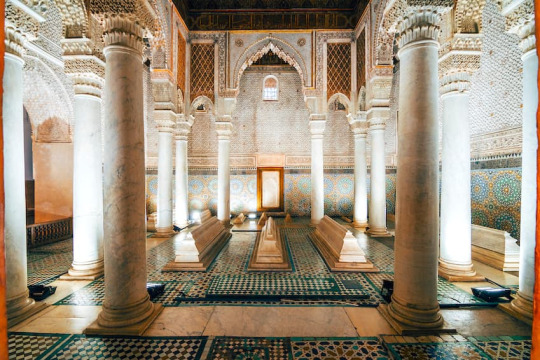
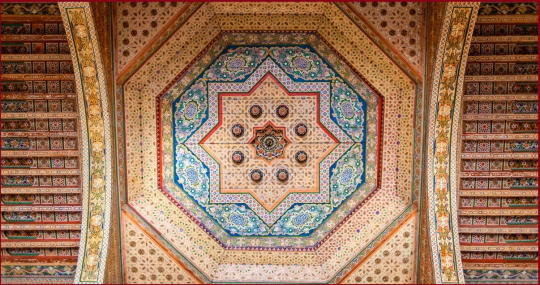
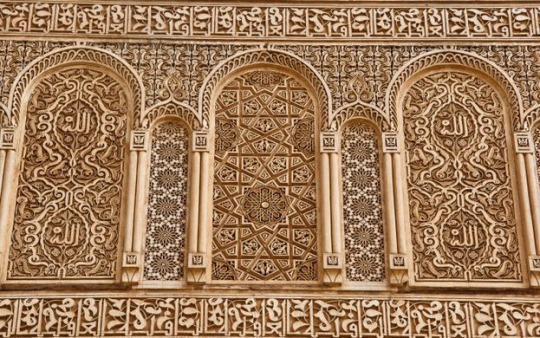
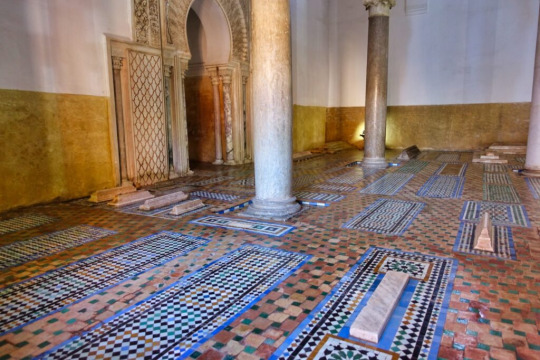
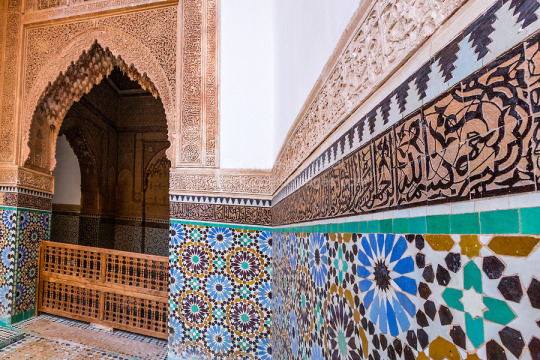


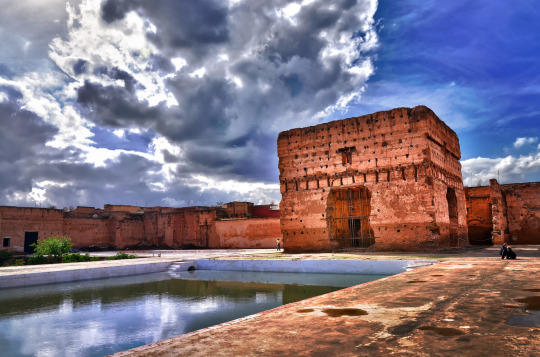


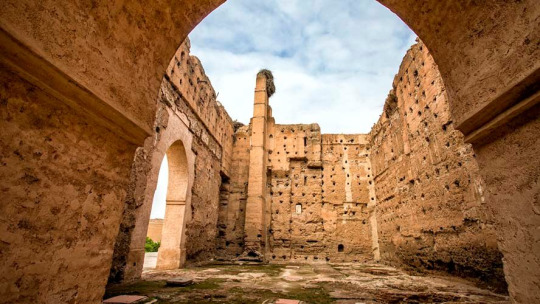
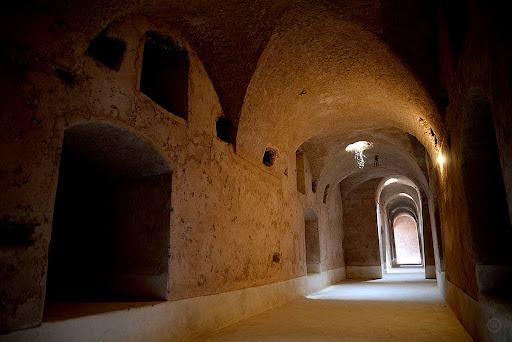
#morocco#travel#ruins#cemeteries#gravestone#grave#marrakech#marrakesh#north africa#arabic#amazigh#islamic architecture#mausoleum#saadi
1 note
·
View note
Text
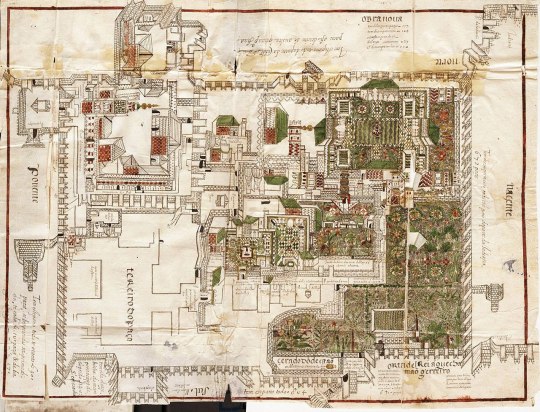
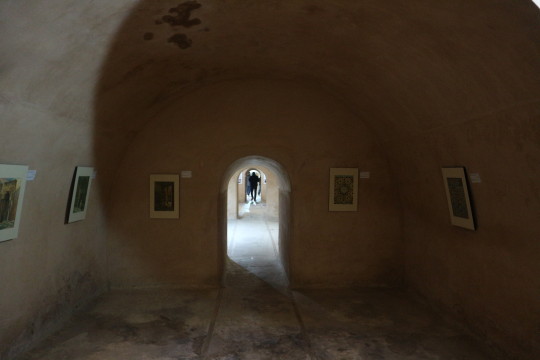
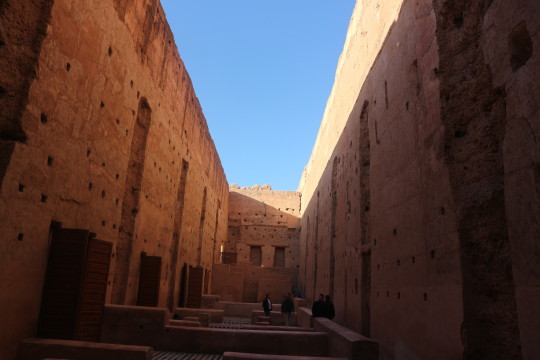
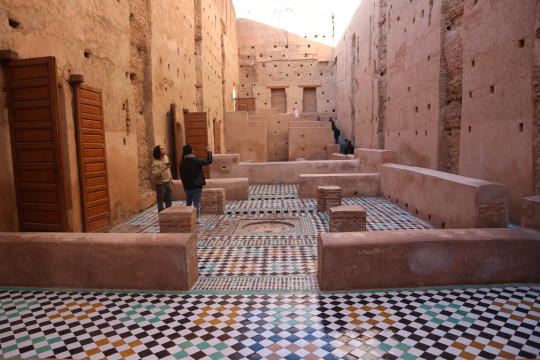
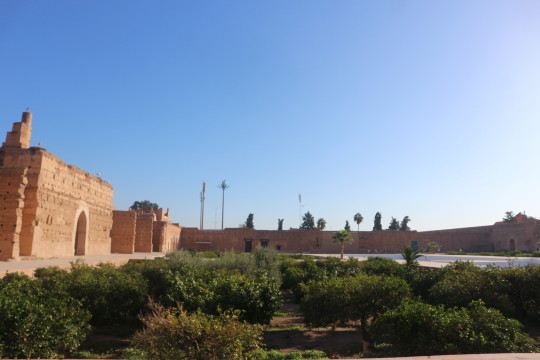

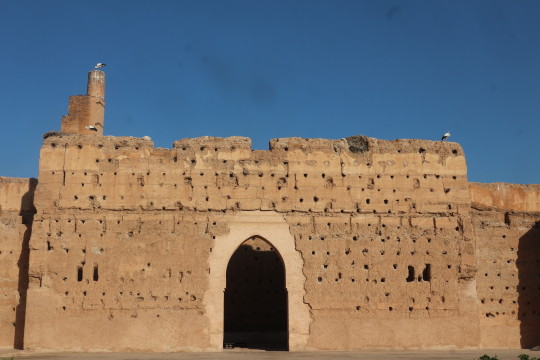
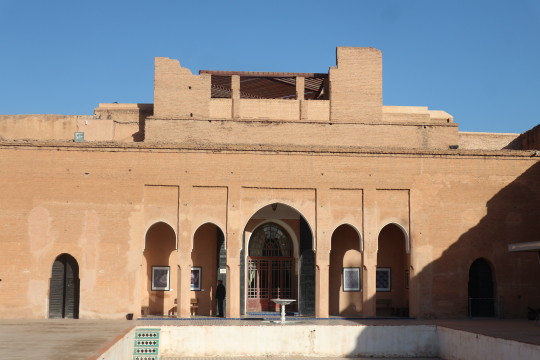

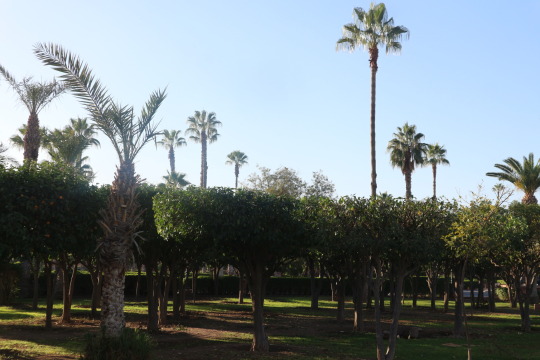
The Incomparable.
The fifth part in my Morocco series (please see here, here, here, here and here for more).
This is El Badi palace (today’s post is only about the time this was built and destroyed; please see here for earlier history and here for later history).
El Badi was built in 1578 by Ahmad al Mansour, sixth of the Saadian Dynasty, who ruled Morocco from 1549 to 1669, having taken over from the Wattasids, who were unpopular for losing the European empire that was ruled from this city from its founding in 1070 until the expulsion of the Wattasids in 1492 from what became the kingdom of Spain.
In the same year, the Spaniards expelled all Jews and Muslims, even though they had lived there for hundreds of years, and many fled to Morocco, thus bolstering the European influence (workers from around the world, Europeans as well as Moroccans, were employed in the building) which had been known here since the Almoravids (1056-1147) built an Andalusian empire from this city which is most clearly seen at Koutoubia Mosque.
The Saadians, whose nearby tomb is also well worth a visit, became wealthy and wanted to build a huge mansion to show their wealth and the power they gained from winning (most of) the wars they waged, and you can still here how imposing their statement was.
They fought off endless attacks from the Spanish, Portuguese (who ruled the nearby city of Tangiers from 1471 to 1661; is a a Portuguese camp in which El Badi is in the top right and you can see the rest of the city as was), the Ottoman Empire (who ruled every Arab country except Morocco, because the Saadians and their successors fought them off).
As well as defending their country from the Europeans and Ottomans, the Saadians could start wars; in 1591 Ahmed Al Mansour conquered the Songhai, an empire in sub-Saharan Africa; Morocco is linked not only to Europe and the Muslim world, but to its African neighbours, and the south was to become a source of slaves and money for Moroccan rulers from then on.
El Badi was already in decline when the last Saadi ruler, Ahmad Al Abbas, was murdered by his uncle in 1659, which led to a civil war that only ended when Al Rashid ibn Sharif seized power in 1666; he boasted descent from Mohammed, founder of Islam, and formed the Alaouite dynasty, which still rule Morocco in the person of present king Mohammed VI.
El Badi was knocked down knocked down by the fearsome ruler Ismail ibn Sharif, whose lengthly reign lasted from 1672 to 1727. He was an Alaouite, brother of Al Rashid ibn Sharif, who fought a series of wars but took no interest in the Saadian palace, which he gutted to use the material for a palace at Menes, which I sadly haven’t seen.
By this time, the English had taken over the old Portuguese colony at Tangiers, on the marriage of Charles II to Portuguese princess Catherine of Braganza, but Ismail booted us out in 1684.
It is rarely talked about in England because it went so badly for us-Charles, in angry humiliation, wanted to “demolish and utterly destroy the place” on the way out, but thankfully this didn’t happen.-
It was a great success for Ismail though, and he also subdued the Berber tribes of the Moroccan heartland (please see here for a glimpse into their way of life which I was allowed to share) who are still here and whose blood flows in the veins of many city dwellers.
Ismail, nicknamed “the bloodthirsty”, owned hordes of slaves whom he seized and then used to fight his endless wars against the Europeans, Africans, Ottomans, and other Moroccans; he is a forefather of current king Mohammed VI, and presumably lots of others as he enjoyed his shagging and has at least 868 known children with at least 500 known wives and mistresses.,
(This was long seen as normal for Moroccan rulers; 4 is an enormous harem where Saadian rulers would keep their wives and mistresses).
(His work is arguably unfinished; at the time of his death he was besieging the Spanish colony of Ceuta, which alongside nearby Melilla is still occupied by Spain, something to bear in mind when the Spanish government next pontificates about Gibraltar).
Leaving the palace I walked into (10) one of the many oases of palm trees that brighten and cool the city.
Here and elsewhere (please see enclosed the rest of my series) we see that Morocco, which has been linked to Europe since Almohad times, can take its place alongside the Greeks, Romans, Byzantines and Ottomans in the living museum with no frontiers that is the Mediterranean.
1 note
·
View note
Text
7-Day Extravaganza: From Chefchaouen to Tangier’s Coastal Beauty
Day 1: Chefchaouen – The Blue Jewel of the Rif
Embark on a vibrant journey as your 7-day extravaganza kicks off in Chefchaouen, the enchanting “Blue Pearl” of Morocco. Nestled in the Rif Mountains, this picturesque town beckons with its azure-hued facades. Wander through the winding alleys, capture Instagram-worthy shots, and breathe in the serene mountain air. Chefchaouen’s unique charm sets the stage for an extraordinary adventure.
Day 2: Fes – Historical Tapestry Unveiled
Head south to Fes, a city steeped in history and culture. Immerse yourself in the medieval ambiance of the UNESCO-listed medina, explore the vibrant souks, and visit the iconic Al-Qarawiyyin University. Fes unfolds like a historical tapestry, each step revealing layers of ancient architecture, bustling markets, and a rich cultural heritage.
Day 3: Meknes – Imperial Grandeur
Continue your journey to Meknes, one of Morocco’s imperial cities. Marvel at the grandeur of Bab Mansour, visit the Mausoleum of Moulay Ismail, and explore the vast Royal Stables. Meknes’ imperial legacy and architectural splendors showcase the opulence of Morocco’s past rulers.
Day 4: Rabat – Coastal Elegance and Historical Riches
Travel to Rabat, the coastal capital of Morocco, where modernity harmoniously coexists with historical riches. Discover the Kasbah of the Udayas, the Hassan Tower, and the charming Andalusian gardens. Rabat’s coastal elegance and cultural heritage provide a captivating backdrop for exploration.
Day 5: Marrakech – Lively Markets and Majestic Palaces
Venture to Marrakech, the dynamic “Red City” that pulsates with life. Lose yourself in the maze of souks, visit the iconic Koutoubia Mosque, and explore the ornate palaces like Bahia Palace and El Badi Palace. Jemaa el-Fnaa square comes alive with street performers and the aroma of exotic spices, creating a sensory feast.
Day 6: Essaouira – Coastal Charms and Artistic Vibes
Journey to Essaouira on the Atlantic coast, where coastal charms and artistic vibes converge. Stroll through the medina’s narrow streets, explore the historic ramparts, and soak in the laid-back atmosphere. Essaouira’s breezy beaches and creative energy provide a perfect respite before your final destination.
Day 7: Tangier – Coastal Beauty and Cross-Continental Flair
Conclude your extravaganza in Tangier, where coastal beauty meets cross-continental flair. Explore the medina’s alleys, visit the Kasbah Museum, and gaze across the Strait of Gibraltar from the Cape Spartel Lighthouse. As your 7-day adventure concludes, savor the memories of Chefchaouen’s serenity, Fes’s historical grandeur, and the coastal allure of Tangier—a kaleidoscope of experiences that defines the essence of Morocco’s diverse landscapes and cultural richness.
0 notes
Text
MOROCCO ANON i am so annoyed i wrote out 4 paragraphs then tumblr deleted it anyway attempt 2 :) here you go warning dorry i got carried away its quite long
Marrakesh itself is somewhere i have always wanted to go, it looks beautiful! I would love to go to the Bahia Palace, its beautiful, but does get busy so perhaps go early!
I would love to see the Djemaa el-Fnaa, which is the main city square. In the evening a load of street food stalls go up and it looks amazing! I believe you can find a cafe with a roof on the square edge, which you can then sit on and look over the square which might be fun! Off of this square, there are a load of the main souks, including Souk Semmarine. This is very me focused, but there is an area that specialises in spices - the Rahba Lakdima square (there are other ones focused on like leather, silver, and woven goods).
There are so many more places as well, the Koutoubia Mosque is very nearby that main city square, and is stunning, and although the inside of the mosque itself is not open to non-muslims the garden outside looks so pretty and you can see the minaret and outside architecture!
Also in Marrakesh is Saadian Tombs and the El Badi Palace which both look really interesting, and the tombs especially has some quite beautiful architecture i think!
I think you said you like hiking (although not camping in the desert) and obv don't know how your getting around but there are so many guided tours out of Marrakesh if you would like, alternatively could probably drive out yourself to some of them!
There are a few main areas people go to from Marrakesh, the closer (~1 hr drive) to the Moulay Brahim Gorges and surrounding towns of Aroumd, Ait Souka, and Imlil I. lots of really good hiking there and not too touristy at all.
About 1.30 hours SE from Marrakesh is the towns of Ourika and Ouirgane, both nice, with good hiking too. Ourika is very isolated, not many tourists and some great hiking. Ourigane has a lake and also some great hiking, but might be a bit more touristy!
About 1.3 hours NE of Marrakesh is the Ouzoud Waterfalls, very touristy but very nice! Hiking to be done, and some waterfalls and a small lake you can get boat rides out onto, have been warned its really quite touristy though.
About ~3.5-4 hours from Marrakesh is the towns of Ouarzazate and Ait Benhaddou. Absolute trek to get there, but if you're interested in movies its where a lot of desert films have been shot! Nice Kazbahs and some beautiful valley views. Probably not worth going for hiking alone, there are just as nice places much closer.
All of these places are very easy (and quite cheap for full days) to get guides to, if you would like!
If you are interested there are also lots of trips into the desert from Marrakesh, i imagine the stars could be pretty incredible in the evening in the Agafay Desert, so would perhaps recommend if you are thinking about going out at all, you try and do an evening trip with dinner or something, for sunset and the stars :) absolutely dont have to camp and stay the night with this too!
Im sorry anon, your ask deleted so I cant remember if there was anythign else - but please if you have any questions this is quite literally my job now so i would be so very happy to help, i really enjoyed writing this out LOL! Hope you have an amazing time!
#in the demaa el-Fnaa square one of my friends told me in the evening there are some animals around#ones that are obviouly not treated fantastically. if that bothers you obviously avoid it :) just thought id mention tho#also i am so so sorry this took so ling i completely forgot :( i am sorry
0 notes
Text
Travel Destination: Places that will give you major travel goals

Traveling to exotic places rejuvenates your soul. It is one of the best gifts that you can treat yourself with. In this blog, we will be taking a look at some of the best travel destinations that you can visit. These places will definitely give you major travel goals. Read on to learn more about the best travel destinations recommended by the Recz app.
Best Travel Destination in the World
1. Bali, Indonesia
Bali is one of the best tourist places that you can and should visit. Every year thousands of tourists flock to this travel destination. Bali has everything that you can find in a tourist destination. It has beaches, it has volcanos, and it has exotic animals. In Bali, you can find tigers and Komodo dragons. Orangutans of Bali are also quite popular among the tourists. If you are wondering which travel destination to visit this year for a vacation, we suggest that you should go to Bali, Indonesia. Bali also has great food. You can treat your taste buds with the amazing food of this country.
2. Kerry, Ireland
Kerry is a county situated in Ireland. It is a popular travel destination. The climate of Kerry is quite pleasant. The North Atlantic Current passes through this region. This results in milder temperatures in the area. Due to this, subtropical plants flourish in this region. Due to the mountain area of Kerry, it receives the highest rainfall in Ireland. This place is known for traditional Irish music, songs, and dance. This is due to the fact that Kerry is situated at the extremity of Ireland. Kerry has lakes and mountains and over 1000 km of the Atlantic coastline. This makes Kerry quite a scenic place and a top travel destination.
3. Marrakesh Morocco
Marrakesh is a city situated in Morocco. This city is the fourth largest city in Morocco. Berber languages and Arabic is spoken in Marrakesh. It is situated west of Atlas mountains. According to portals, this exotic place has been inhabited by Berber farmers since the Neolithic period. Marrakesh is one of the most traveled destinations in Morocco. Jemaa el-Fnaa, Bab Agnaou, El Badi Palace, Bahia Palace, and Kutubiyya Mosque are some of the best tourist places in Marrakesh that you can visit while in Morocco. The word Marrakesh comes from the Berber language, where it means ‘the land of God.’ Ever since the independence of Morocco, Marrakesh has become a famous tourist destination.
4. The Maldives
Maldives is a tropical nation situated southwest of Sri Lanka and India. It is situated about 750 km from the Asian mainland. The beaches of Maldives are some of the most visited beaches in the world. It is a very famous tourist destination. The Maldivian archipelago is also quite famous and the most visited travel destination in the world. Tourism began in the Maldives around the 1970s. This tourist destination consists of over 1000 coral islands. Maldives enjoys a tropical monsoon climate. The temperature of this island country is often hot and humid. The beaches of Maldives are some of the best beaches in the world and are quite common tourist destinations. There are over 1000 fish species around the Maldives. The marine life around the Maldives is quite rich. Maldives is one of the cleanest countries in the world.
5. Paris, France
It is situated in France. Paris is also one of the most visited travel destinations in the world. It is also the capital of France. This tourist destination is known for being the world’s major center for finance, diplomacy, commerce, and fashion. In the 19th century, this place gained the epithet ‘the City of Light.’ Paris is also known for its food. Some of the most popular travel destinations include the Eiffel Tower, the Seine, Arc de Triomphe, Palais Garnier, and the Louvre. During the time after the First World War, many writers and artists moved to Paris. This included Earnest Hemingway, James Joyce, Henry Miller, Salvador Dali, and others.
6. Cape Town, South Africa
Cape Town is one of the most traveled tourist destinations in the world. It is the capital of South Africa. There are several places in Cape Town that you can visit while in South Africa. Table Mountain, Cape Point, Groot Constantia, Robben Island, Kirstenbosch Botanical Garden, V&A Waterfront, and others. The Table Mountain of Cape Town is a World Heritage Site. This mountain supports unique flora and fauna. The Cape Town Natural Reserve is a beautiful place with hills and rocky coastline. Every year, thousands of tourist flock to this beautiful town.
7. Kasol, India
Kasol is among the most popular tourist destinations in the world. It is a hamlet situated in the Kullu district, which is a part of Himachal Pradesh This place is situated in Parvati Valley and is on the bank of the Parvati River. Kasol has beautiful weather throughout the year. It witnesses heavy snowfall from December to February. The climate of this place is categorized as humid subtropical. The food in Kasol is delicious and quite popular.
These are some of the tourist destinations recommended by the Recz app. Stay tuned for more information on the best travel destinations in the world. The Recz app has suggestions and recommendations for everything ranging from travel destinations to movies.
1 note
·
View note
Photo
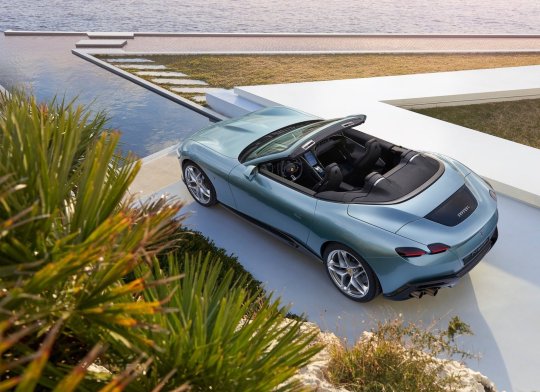
Unveiled today: the Ferrari Roma Spider, a 2+ spider equipped with an innovative soft top
Featuring special bespoke fabric in numerous tailored options, the soft top boasts acoustic comfort on a par with retractable hard tops and can be opened in just 13.5 seconds at speeds up to 60 km/h
Top-down driving comfort is ensured by a patented wind deflector that is integrated into the rear seat backrest
With its 620cv, twin-turbo V8 and vehicles dynamics systems from the Ferrari Roma, the new Ferrari Roma Spider offers an unmatched combination of timeless elegance, driving thrills, performance and on-board comfort
The Ferrari Roma Spider, the latest model from the Maranello marque, was presented to clients today at an exclusive event at the El Badi Palace in Marrakesh. This timelessly elegant, high-performance car is a contemporary take on the chic, pleasure-seeking Italian lifestyle of the 1950s and 60s. This spider carries over the proportions, volumes and specifications of the Ferrari Roma’s hugely successful V8 2+ concept, but what makes it so striking is the adoption of a soft top, a solution making a welcome return to the Prancing Horse range on a front-engined car 54 years after the 1969 365 GTS4.
There’s a novel and modern take on the soft-top design that underlines the Ferrari Roma Spider’s exuberant character, with extensive personalisation options that include sophisticated, bespoke fabrics and contrasting stitching. On a functional level, the soft top deploys in just 13.5 seconds and can be actioned at up to 60 km/h. The fact that it is so compact also yields a larger boot and boosts the car’s versatility. A new, patented wind deflector integrated into the backrest of the rear bench can be deployed by a button on the central tunnel, guaranteeing exceptional in-car occupant comfort without taking up any space in the car.
2024 Ferrari Roma Spider
The Ferrari Roma Spider retains the Ferrari Roma’s excellent dynamic characteristics: it boasts a best-in-class weight/power ratio thanks not only to its soft top, but also to its all-aluminium chassis and 620 cv V8 from the engine family that was heralded as the International Engine of the Year on four consecutive occasions. The engine is coupled with Ferrari’s universally-acclaimed 8-speed DCT known for its incredibly fast shift times as well as excellent standards of comfort and mechanical efficiency.
The Ferrari Roma Spider is not just rewardingly easy to drive, it is also extremely dynamic and responsive: this makes it the perfect companion on out-of-town weekends and longer journeys alike. Always, of course, with the exhilarating Ferrari V8 soundtrack playing in the background. A number of features are designed to make this car superbly versatile, including a category-topping boot size which includes a hatch via the rear seat backrests to allow larger items to be carried, and standard wireless connectivity by Android Auto® and Apple CarPlay® Wi-Fi. Not forgetting, of course, 18-way-adjustable heated ergonomic seats that are also available with an optional neck warmer for colder days.
STYLE
Designed by the Ferrari Styling Centre headed by Flavio Manzoni, the Ferrari Roma Spider aims to move the “La Nuova Dolce Vita” concept beyond city limits for elegant, carefree driving ‘en plein air’. This 2+ spider boasts a sophisticated fabric soft top, which is designed not just to maintain, but to enhance the flawless proportions of the coupé on which it is based without modifying that car’s elegantly flowing silhouette.
Redesigning the coupé’s tapering, fastback roofline meant modifying the rear screen to incorporate it into the soft top so that it can fold below the tonneau cover when open. On the Ferrari Roma Spider, the original styling theme has become a body-colour band running across the base of the roof that divides the carbon-fibre active spoiler from the roof and rear screen, creating a seamlessly integrated tonneau cover. When the soft top is lowered, the active spoiler visually connects with the rear bench and head rests.
Unlike the more usual basic fabrics seen on most convertibles, a new material has been used for the Ferrari Roma Spider’s soft-top, giving it a sophisticated air. Special fabric weaves were selected and developed in colour combinations that highlight the car’s twin souls, one more elegant and the other sportier. The bespoke finish with two-tone weave draws on a palette of four colours highlighting the refined, haute couture nature of the fabric. The optional technical fabric developed specifically for this car gives it a sporty yet very sophisticated allure with an innovative weave creating an extremely striking iridescent red finish that further enhances the roof’s 3D surface.
EXTERIOR
The stylistic approach taken for the Ferrari Roma Spider’s exterior centres around a clean design and absolute symbiosis between its various elements. Its harmonious proportions and pure, elegant volumes are very much in line with Ferrari’s front-engined GT tradition. That said, the designers have created a modern take on those classic proportions, giving the car a sophisticated, contemporary stylishness.
The long front bonnet underscores the spare silhouette of the flanks, lending a sense of sleekness to the entire body and a dynamic look. The sober, spare front of the car looks as if it were sculpted from single block of metal, creating an overhanging, sharknose effect.
The bonnet and sinuous wings flow into one another yet also effortlessly harmonise with Ferrari’s traditional styling cues. The designers sought to preserve the minimalist elegance of the car’s forms by removing any vents or superfluous decorative features. In fact, the launch configuration does not even include the Scuderia Ferrari side shields, reflecting the approach taken with the road cars of the 1950s.
Engine cooling is guaranteed by the perforated surfaces, only where strictly necessary, creating a new interpretation of the grille concept: this distinctive solution is finished in the same colour as the bodywork, rendering it seamless with the styling. The edges of the front grille flow into two linear, full-LED headlights which lend the front of the car a distinctive character all of its own. They are traversed by a horizontal DRL strip that hints at the structure beneath the car’s skin, an element that brings a sense of tension to the entire circumference of the car.
The fastback cabin volume is compact and set back, ending in a subtle nolder beneath which the designers have created a modern take on the signature Ferrari tail. The Ferrari Roma Spider’s long rear overhang, which is a characteristic of the Ferraris of the 1950s and 60s, has been re-proportioned here, resulting in a low, compact volume which hugs the rear axle. The wraparound tail of the car is characterised by the purity and modernity of the transom styling. Technological advances made it possible to reduce the dimensions of the tail light assembly, resulting in a minimalist and iconic design. The rear is completed by a compact aerodynamic diffuser that incorporates the fence and exhaust tailpipes.
CABIN
For the Ferrari Roma Spider’s cabin, the Ferrari Styling Centre designers took the same approach to volumes and forms introduced on the Ferrari Roma. Two separate spaces, one each for driver and passenger, were created in an evolution of the dual cockpit concept, which has its roots deep in the marque’s history with cars from the 1970s. The innovative look of this dual cockpit was achieved by extending the philosophy applied to the dash to the entire cabin. Hence, the vision of two modules that wrap around driver and passenger and that extend and integrate with the two rear seats.
The Ferrari Roma Spider’s cabin has an almost symmetrical layout which produces a more organic distribution of both spaces and functional elements. The result is that the passenger will feel very involved in the driving experience – almost like a co-driver, in fact. The forms have been crafted to create a sculptural volume in which there is a sense of textural continuity between all the various cabin elements.
Created by paring back the volumes and underscored by piping along their edges, the two cockpits are cocooned in a wraparound volume and extend from the dashboard all the way back to the rear seats, organically incorporating the dash, doors, rear bench and tunnel. Thus, the cabin is not designed as a collection of separate sub-assemblies, but defined by elements that develop organically.
The technology adopted is derived from the Ferrari Roma: the digital instrument cluster is integrated with the volumes around it and protected by an anti-glare binnacle which extends out naturally from the dash. The passenger has an optional display that allows them to share the driving information. An 8.4” central display set between the two cockpits and partly floating between the dashboard and tunnel incorporates the other infotainment and climate control functions.
The F1 gearbox controls have been set into a modern metal plate which references the iconic gear lever gate. In the Ferrari Roma Spider, this is in the centre of the tunnel and inclined to make it easier for the driver to reach and see.
The steering wheel’s HMI is a further honed and refined version of that seen on the Ferrari Roma with touch controls on its spokes. The left-hand spoke has indents corresponding to the touch controls to ensure the driver can feel which one to use. The track pad on the right-hand spoke has been improved – there is now an indent that makes it easier to swipe. These solutions help the driver know where the controls are, in line with the “Eyes on the road, hands on the wheel” philosophy Ferrari has been adopting for quite some time. The Engine Start button is now also backlit in red to underscore the thrill of the moment the iconic Ferrari twin-turbo springs to life.
POWERTRAIN
The Ferrari Roma Spider is powered by an engine belonging to the V8 turbo family named “International Engine of the Year” for four consecutive years and also voted “Best Engine of the Last 20 Years” in 2018. The 3,855 cc power unit can punch out 620 cv at 7,500 rpm, the equivalent of 161 cv/l, which it combines with the flexibility of low-end pick-up, thanks to 80% of the torque being available at just 1900 rpm.
The Ferrari Roma Spider also sees the introduction of an important evolution of the oil pump which reduces time-to-pressure in cold starts by 70%, as well as increasing the flow rate at medium revs. The same modification has also been introduced on the Ferrari Roma, demonstrating the company’s commitment to continual research and development.
Like all Ferraris in the range, the Ferrari Roma Spider delivers instantaneous throttle response. This is the direct result of the adoption of specific solutions, such as a flat-plane crankshaft, which is more compact in size with lower rotating masses to improve fluid-dynamics; compact turbines which have a lower moment of inertia; twin-scroll technology that directs the exhaust gases from each cylinder through separate scrolls and increases the pressure of the exhaust pulses for maximum power; and a single-piece, cast exhaust manifold with equal length pipes to optimise pressure waves in the turbine and reduce losses.
The Ferrari Roma Spider boasts Variable Boost Management, a control software developed by Ferrari that adjusts torque delivery to suit the gear selected, delivering increasingly powerful pick-up as revs rise, whilst optimising fuel consumption. As the car goes up through the gears, the amount of torque delivered by the engine increases, continuing all the way up to 760 Nm in 7th and 8th gear. This allowed the use of longer gear ratios in the higher gears, which helps keep fuel consumption and emissions down, while adopting a steeper torque curve through the rev range in the lower gears for a feeling of smooth, consistent pick-up.
The gearbox is based on a dual-clutch oil bath architecture and is derived from the 8-speed gearbox first introduced on the SF90 Stradale. The main modifications made with respect to the latter are longer gear ratios and the introduction of a reverse gear. The new layout and component integration thus optimised the gearbox’s size and its installation in the car.
With eight gears and optimum transmission efficiency, fuel consumption in urban and motorway contexts has been reduced without compromising on performance. In fact, there is a noticeable improvement even in sporty driving. The main technical features that have guaranteed this result are the use of low-viscosity oil and a dry sump configuration to minimise fluid-dynamic efficiency losses (oil splashing) in addition to the use of a specially-designed differential (with the input pinion axis not offset to reduce slip speed.
The clutch module is 20% smaller than the previous 7-speed, but delivers 35% more torque, with up to a maximum 1,200 Nm of dynamic torque transmitted when gear shifting. The transmission software strategy has been evolved thanks to a more powerful ECU and better integration with the engine management software. Particular attention was also lavished on the strategies designed to reduce fuel consumption and emissions, particularly when the Start&Stop function is in use.
Every single Ferrari engine has its own particular soundtrack that makes it unique and, of course, the Ferrari Roma Spider is no exception to that rule. In addition to the flat-plane crankshaft, which synchronises engine firing, and equal-length exhaust headers, which equalise the sound, the spider adopted the Ferrari Roma’s entire exhaust line that eliminated the two rear silencers in favour of new geometry for the by-pass valves. The continuous and progressive by-pass valve control underscores the engine sound and performance depending on the driving situation.
AERODYNAMICS
The adoption of a fabric soft top and its indirect impact on the car’s bodywork geometries provided the starting point for the aero development. To retain the Ferrari Roma’s low drag, combined with the possibility of generating efficient downforce, the line of the roof and its curvature over the frontal section were subjected to in-depth numerical analysis and guided by the work of the Aerodynamic Department to ensure the project target was reached.
The modifications to the Ferrari Roma Spider’s bodywork also required new mobile spoiler geometry. In fact, the design of the latter has been meticulously honed to reflect the car’s styling and new roof line. Similar to the Ferrari Roma, this element is designed to extend and retract in a calibrated way specific to the spider as a function of the car’s speed, and the longitudinal and transverse acceleration acting on the body. This guarantees three different spoiler positions, specifically calibrated for top-down driving.
The result is that the Ferrari Roma Spider has downforce in handling situations and at high speeds comparable with the Ferrari Roma, ensuring the car is always aerodynamically balanced and able to deliver the same driving exhilaration. Huge attention was lavished on aerodynamic comfort on board with the top down, with particular focus on minimising both turbulence and wind noise in the cabin.
The solutions selected were driven by the need to simplify the transition from top-up to top-down driving, by introducing automatic movements for the surfaces tasked with creating an aerodynamic ‘bubble’ effect over the cockpit for comfort. The first was the addition of a 5mm nolder on the new windscreen header rail in the area of the flow separation. The second was the development of an automatic patented wind deflector that can be deployed by the driver without any need to stop the car. If the client wants to deploy the wind deflector, they simply press a button on the tunnel and the backrest of the rear seats (in the absence of rear passengers) will rotate into position behind the front occupants’ heads.
In this configuration, the air flow that would normally be drawn into the cabin from the rear of the car is deflected, creating an area of relatively still air around the occupants and reducing still further the turbulence around the heads of taller drivers by around 30% compared to previous 2+ spider applications. The deployable wind stop’s permeability was optimised by a transverse aperture at its centre which, thanks to its calibrated angle, acts as a real aerodynamic duct, while its shape in the plan view is tapered at the sides. These two geometric characteristics combine to deflect the most highly energised flow entering the cabin well away from the occupants.
The duct at the centre of the wind stop ensures that part of the flow entering the cabin is deflected downwards towards the rear seat, forcing it to mix with a slower flow. This means it loses most of its energy, effectively reducing turbulence in the cabin. The result is an extension of the bubble around the occupants and particularly their heads, guaranteeing unparalleled en plein air comfort. The shape, angle and permeability of the deployable wind stop are all crucial to achieving this objective, and were developed thanks to a combination of CFD simulation and many wind tunnel sessions.
There is no doubt that the most visually striking downforce generation feature is the active spoiler at the rear of the car’s upper body. A mobile spoiler is cleverly concealed in the rear lid, not interfering in the least the car’s line. However, thanks to a special mechanism, it can deploy into three different positions (Low drag – LD, Medium Downforce – MD, High Downforce – HD).
In low speed situations, when downforce has only a modest impact on the car’s performance, the spoiler goes into low drag position. This configuration is maintained until the car hits a speed of 100 km/h. At speeds of over 300 km/h, the spoiler is in MD mode. This choice was made because in these conditions, the preference is for a better balanced car, in part because of the minimal impact on drag. In speed ranges in which downforce plays a pivotal role in performance, the spoiler is in MD position and its movement to the HD position depends on the car’s longitudinal and lateral acceleration. The threshold value is variable and linked to the Manettino position.
In medium downforce mode (MD), the mobile element is at a 150-degree angle to the rear screen. In this configuration, it can generate around 30% of maximum downforce with an increase in drag of under 1%. In high-performance handling or braking situations, the mobile element automatically moves to HD configuration, generating maximum downforce and readying the car to provide the driving thrills that all Ferraris deliver. When deployed to its maximum height (HD), the mobile element creates a 135 degree angle with the surface of the rear screen, thus generating around 95 kg of downforce at 250 km/h, yet increasing drag by a mere 4%.
The increase in front downforce is due for the most part to a pair of vortex generators, which have been optimised for this particular model. They create a ground effect by introducing concentrated and coherent vortices into the area whilst simultaneously managing the wake from the front wheels with the ultimate aim of guaranteeing very efficient downforce generation.
VEHICLE DYNAMICS
The goal of the Ferrari Roma Spider’s vehicle dynamics development was to deliver superior driving thrills and handling precision on a par with the Ferrari Roma, thanks to the Side Slip Control concept which uses an algorithm developed by Ferrari that provides an instantaneous estimate of side slip to all the various on-board control systems. This data is then used to coordinate and implement interventions in a rapid, timely and accurate manner.
The Side Slip Control System (SSC), version 6.0 of which is used here, integrates all the car’s vehicle dynamics systems, most notably the Ferrari Dynamic Enhancer, active solely in the Manettino’s ‘Race’ position. The FDE is a lateral dynamics control system that rapidly adjusts the hydraulic brake pressure at the callipers on all four wheels consistent with the dynamic situation requiring control. It is designed to make the evolution of the car’s lateral dynamics more predictable through and exiting corners, ensuring the driver’s control of the steering wheel and throttle are simpler and more intuitive. The system flanks the traditional Electronic Stability Control system.
Like the Ferrari Roma, the Ferrari Roma Spider’s Manettino has five positions to make its handling and traction performance even more accessible with the introduction of the Race position. Supported by the introduction of the Ferrari Dynamic Enhancer, this position is designed to boost fun behind the wheel.
CHASSIS AND BODYWORK
The Ferrari Roma Spider’s chassis is derived from the Ferrari Roma, but features new components, with the rear section inspired by the solution used on the Ferrari Portofino M. The sill, a fundamentally important structural element, was developed specifically for the Ferrari Roma Spider, as were some elements required to install the soft top, and the A-pillar/windscreen surround.
The bodyshell retains the fundamental elements of the Ferrari Roma’s design: the modifications made focused mainly on the rear and on harmonising the Ferrari Roma Spider’s lines so that they retain their elegance with the top down. Exceptional torsional rigidity and beam stiffness figures for the bodyshell and chassis have been achieved despite an increase in weight of just 84 kg for a weight/power ratio of 2.5 kg/cv, which remains at the very top of the high-performance 2+ spider category. This impressive result also ensures that the Ferrari Roma Spider benefits from the same excellent handling and performance as the Ferrari Roma.
This increase was due in part to two factors. Firstly, the addition of the unique integrated wind deflector, which significantly improves occupant comfort. Secondly, the addition of headrests for the rear seats that visually integrate into the tonneau cover design.
The automatic fabric soft top guarantees occupant comfort on a par with the retractable hard top system equipping the other spider models in the range. The large rear glass screen is fully integrated into the soft-top geometry. The five-layer fabric dampens wind and road noise, making it quiet even at high speeds. During development, special attention was also paid to reducing the ballooning effect typical of soft tops. The technical solutions adopted by Ferrari’s engineers have thus guaranteed class-leading performance in these areas.
The soft-top mechanism was designed to be light yet resilient: it pushes technical performance limits to new heights thanks to a Z-shaped movement that folds the soft top away in a mere 13.5 seconds and up to a maximum speed of 60 km/h. When stowed, the roof occupies a height of just 220mm, which is the lowest in the category, and that, in turn, ensures a roomy boot (a class-leading 255 litres with the top up).
The gas springs used to extend the wind deflector were meticulously designed and developed to deliver controlled, smooth action at all stages of movement and in all conditions. The wind deflector can be opened at up to 170 km/h. The chance of opening the mechanism is automatically speed-limited to ensure that it can be deployed in safety. Once in place, the wind deflector can be used at any speed in open configuration.
The wind deflector retains all the features unique to a real backrest: the surface the rear occupants rest on is padded for comfort, while it is shaped to open even when the front seats are pushed back. The central duct compensates for the air pressure acting either side, improving the efficiency of its movement. The system’s kinematic points are the result of an in-depth study of the entire back seat and boot area, optimising their position in relation to movement and weight.
7 YEARS MAINTENANCE
Ferrari’s unparalleled quality standards and intense focus on client service underpin the extended seven-year maintenance programme offered with the Ferrari Roma Spider. Available across the entire range, it covers all regular maintenance for the first seven years of the car’s life. This scheduled maintenance programme for Ferraris is an exclusive service that gives clients the certainty that their car is being kept at peak performance and safety over the years. This very special service is also available to owners of pre-owned Ferraris.
Regular maintenance (at intervals of either 20,000 km, or once a year with no mileage restrictions), original spares and meticulous checks by staff trained directly at the Ferrari Training Centre in Maranello using the most modern diagnostic tools are just some of the advantages of the Genuine Maintenance Programme. The service is available on all markets worldwide and from all Dealerships on the Official Dealership Network.
The Genuine Maintenance programme further extends the vast range of after-sales services offered by Ferrari to meet the needs of clients wishing to preserve the performance and excellence that are the signatures of all cars built in Maranello.
(Ferrari Press Release)
0 notes
Link
0 notes
Photo

#Repost - @gerdycoool65 by @elbadipalace Palace El Badi #marrakech #marrakesh #marrakech🇲🇦 #marrakesch #palace #palast #elbadipalace #türe #door #schölkopf #schoelkopf #historisch #antik #alt #altbauliebe #charme #marokko #maroc #canon #canon_photos #vacation #mustsee #schön #holzarbeiten #kunst (at El Badi Palace) https://www.instagram.com/p/Cp-_wLdouPu/?igshid=NGJjMDIxMWI=
#repost#marrakech#marrakesh#marrakech🇲🇦#marrakesch#palace#palast#elbadipalace#türe#door#schölkopf#schoelkopf#historisch#antik#alt#altbauliebe#charme#marokko#maroc#canon#canon_photos#vacation#mustsee#schön#holzarbeiten#kunst
0 notes
Photo

El Badi Palace 🌍 (presso El-Badi-Palast) https://www.instagram.com/p/Cp0tzAmKhBn/?igshid=NGJjMDIxMWI=
0 notes
Photo
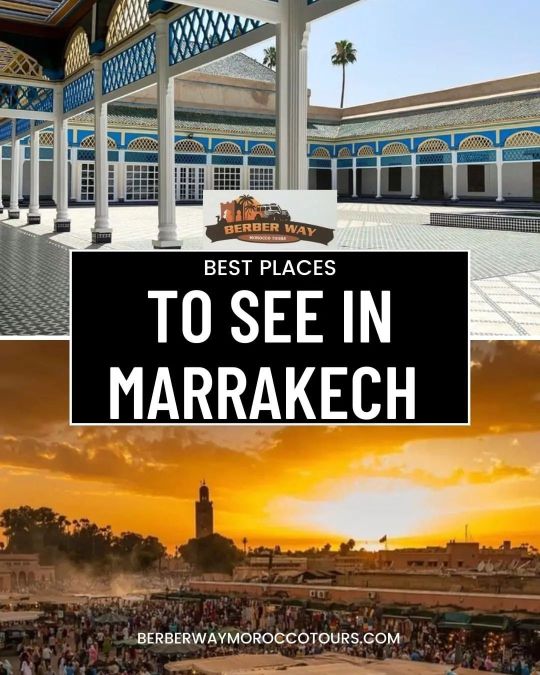
Best things to see in Marrakech Marrakech is a beautiful city in Morocco known for its rich history, stunning architecture, and vibrant culture. Here are some of the best things to see and do in Marrakech: Jemaa el-Fnaa: This is the main square in Marrakech, known for its lively atmosphere, street performers, and food stalls. It's a must-visit for anyone visiting Marrakech. Bahia Palace: This palace was built in the 19th century and is known for its beautiful gardens, intricate tile work, and stunning architecture. Saadian Tombs: These tombs were built in the 16th century and are the final resting place of the Saadian dynasty. They were rediscovered in 1917 and are now open to visitors. Koutoubia Mosque: This mosque is one of the most important landmarks in Marrakech and is known for its impressive minaret. Majorelle Garden: This garden was designed by French painter Jacques Majorelle and features a stunning collection of plants and a vibrant blue villa. Medersa Ben Youssef: This former Islamic college is now a museum that showcases traditional Moroccan architecture and design. El Badi Palace: This ruined palace was once the grandest in Marrakech and is now a popular tourist attraction. Souks: Marrakech is famous for its souks, or markets, where you can find a wide variety of goods, including spices, textiles, and pottery. Museums: Marrakech is home to several museums, including the Museum of Marrakech and the Photography Museum. Hammams: A hammam is a traditional Moroccan steam bath, and Marrakech is home to several hammams where you can relax and rejuvenate. Follow me for more @berber_way_morocco_tour #marrakech #marrakesh #marrakechstyle #marrakechmedina #marrakeshstyle #VisitMarrakech #marrakech🇲🇦 #marrakechriad #VisitMorocco #marraquexe #马拉松 #moroccotours #moroccoplaces #moroccovacations #moroccotrip #moroccotravels (at Marrakech, Morocco) https://www.instagram.com/p/CpLtGtpMDbj/?igshid=NGJjMDIxMWI=
#marrakech#marrakesh#marrakechstyle#marrakechmedina#marrakeshstyle#visitmarrakech#marrakech🇲🇦#marrakechriad#visitmorocco#marraquexe#马拉松#moroccotours#moroccoplaces#moroccovacations#moroccotrip#moroccotravels
0 notes
Link
Riad Ben Nacer Marrakech Riad Ben Nacer Marrakech Located 800 meters from El Badi Palace and less than 1 km from Moulay El Yazid Mosque, ria...
0 notes